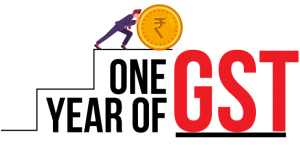Editor’s note: It has been a year since the Narendra Modi government rolled out the Goods and Services Tax (GST), on 1 July, 2017. The introduction of the indirect tax regime marked the end of over a decade of wrangling, when politicians struggled to build consensus across party lines. Firstpost is publishing a series of articles wherein experts will analyse the triumphs and the pitfalls of the roll out of the GST. It was on 1 July 2017 that the Goods and Services Tax (GST) was rolled out across the country. For such a paradigm changing reform, surprisingly, there were only a few hiccups. The air-conditioned (AC) and non-AC restaurants dichotomy resulted in a huge but avoidable hardship to consumers who were at their wits’ end in telling between eat-outs charging an 18 percent tax and the ones charging a softer 12 percent tax. Confusion throws up solutions. And it happened sooner than later. A five percent GST on restaurants became the norm. The Economic Survey report authored by the government’s Chief Economic Advisor, Arvind Subramanian, in the run up to Budget 2018,
warmed the cockles of the government and of GST enthusiasts like nothing else before. That an additional 34 lakh taxpayers were registered in the GSTN portal was music to the ears of the government, with 17 lakh being voluntary registrations by small and medium enterprises (SMEs), despite their turnover being below the Rs 20 lakh annual threshold, done with the sole laudable objective of availing input tax credits (ITC). In fact, ITC’s are the centerpiece of the GST. Overall, the tax base thus swelled by 50 percent! [caption id=“attachment_4369575” align=“alignleft” width=“380”]
Representational image. Reuters.[/caption] The report said the pre-GST revenue collection by the Centre and the states was Rs 9.7 lakh crore in fiscal 2016-17, from products and services brought into the GST net, while the estimated annualised GST revenue collection for fiscal 2017-18 was expected at Rs 10.9 lakh crore. This was heartening because there was a fear among a few states that GST might entail a revenue loss. Luckily for them, those fears were found to be exaggerated if not imaginary in hindsight. The initial anxieties were of course born out of the roller-coaster nature of GST collections. As per data available, GST collections in July 2017 was over Rs 95,000 crore, while in August the figure was over Rs 91,000 crore. In September, it was over Rs 92,150 crore, in October it was Rs 83,000 crore, in November it was Rs 80,808 crore and December it stood at Rs 86,703 crore. But with Rs 1 lakh crore in April 2018, those anxieties have been finally put to rest. For the consumers as well there was a wave of relief post the wholesale shift of numerous items from the peak 28 percent slot to the more reasonable and mean rate of 18 percent. This happened in the run up to the Gujarat election. The announcement came after the 25th GST Council meeting on 18 January 2018, finally nailing the facetious description of GST as the gabbar singh tax. But then the rates are still a work in progress. Consider the three percent GST on jewellery. There is no reason why it cannot be upped to 10 percent if only to enable a compensatory inflow of tax for the exchequer, now that bringing in petroleum products into the GST net looks unavoidable if not imminent. It is unfair to expose the poor and the middle class to a hefty combined center-state imposed rate of 50 percent on petroleum products while leaving ostentatious gold with just a slap on its wrist. Indeed the rates may have to be revisited when the other items namely real estate and liquor are also brought into the GST net, which might reduce the revenue collections. No tears would be shed for a peak rate of 40 percent by way of a sin tax/ostentation tax. GST, a variant of the value added tax (VAT), has two USPs – avoidance of a cascading effect and the self-policing mechanism. While the first has been demonstrated (although petroleum products have escaped its beneficial and benign impact), the much vaunted self-policing mechanism has admittedly not been fully utilised. The government itself admits this. The system itself must be capable of isolating rogues and exposing them. If voluntary courting of GST by SMEs can swell the revenue kitty, robust self-policing can add much more to the government’s coffers. That would be the time to moderate the mean GST rate. The Economic Survey said that based on the trends of revenue collections, the revenue neutral rate (RNR) of GST should be between 15–16 percent. In December 2015, a Subramanian-headed panel had recommended that the RNR should be between 15–15.5 per cent for GST, with a preference for the lower number. How prophetically accurate he has been! (The author is a senior columnist and tweets @smurlidharan) Read the other articles from the series here:
One year of GST: Tax regime is anything but good and simple; govt can simplify it to improve ease of doing business One year of GST: Integration of unorganised sector is major achievement; govt must ensure transmission of lower taxes to consumers One year of GST: Government could push a raft of anti-evasion measures if compliance or collections dip One year of GST: The tax regime is helping reduce shady realty transactions, but property prices aren’t down One year of GST: With compliance at 69%, tax collections have begun to stabilise; time to make process smooth One year of GST: Indirect tax regime is a great success; has led to growth in GDP, says Adi Godrej
If voluntary courting of GST by SMEs can swell the revenue kitty, robust self-policing can add much more to the government’s coffers.
Advertisement
End of Article


)

)
)
)
)
)
)
)
)



